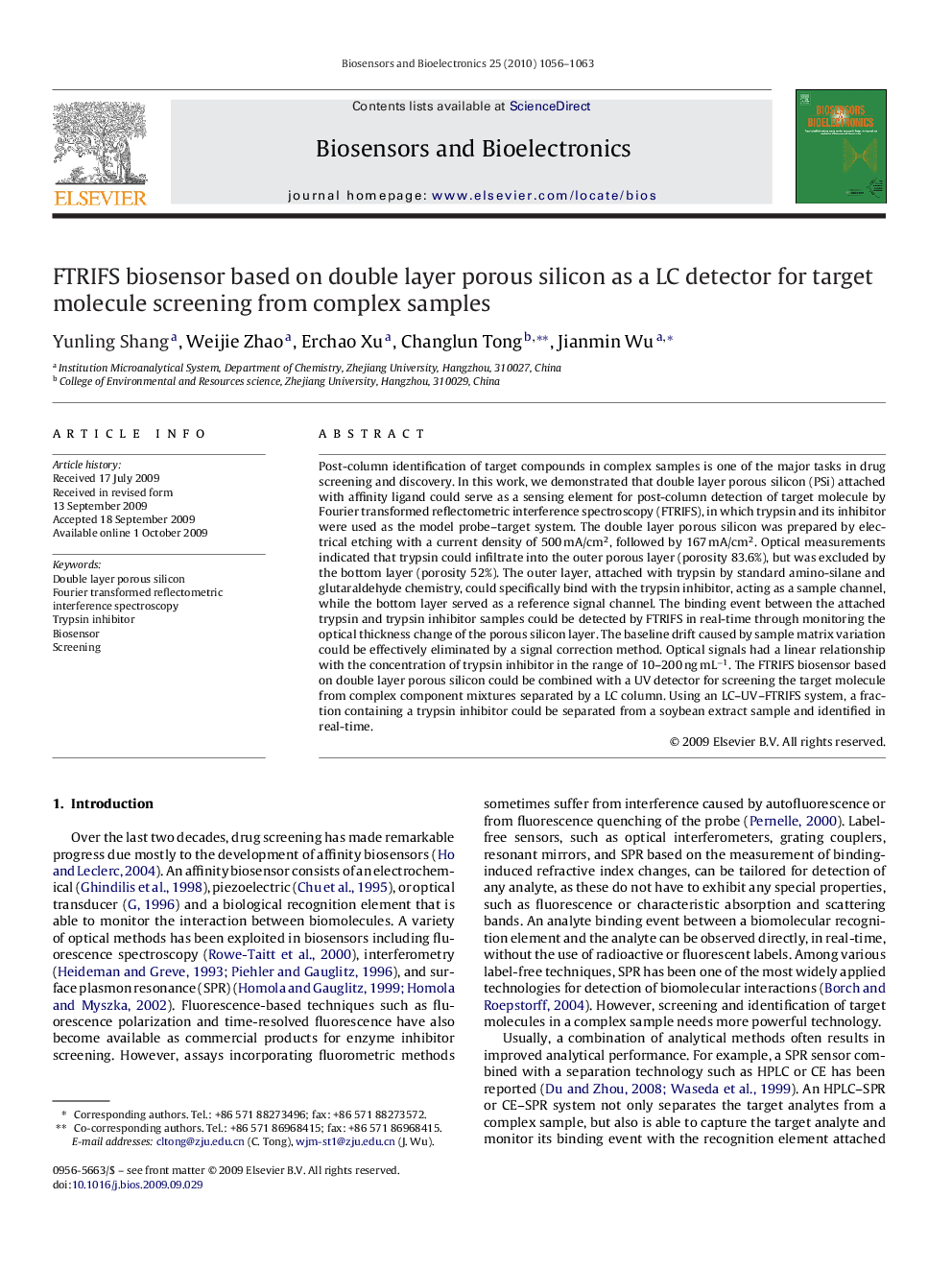| Article ID | Journal | Published Year | Pages | File Type |
|---|---|---|---|---|
| 868796 | Biosensors and Bioelectronics | 2010 | 8 Pages |
Post-column identification of target compounds in complex samples is one of the major tasks in drug screening and discovery. In this work, we demonstrated that double layer porous silicon (PSi) attached with affinity ligand could serve as a sensing element for post-column detection of target molecule by Fourier transformed reflectometric interference spectroscopy (FTRIFS), in which trypsin and its inhibitor were used as the model probe–target system. The double layer porous silicon was prepared by electrical etching with a current density of 500 mA/cm2, followed by 167 mA/cm2. Optical measurements indicated that trypsin could infiltrate into the outer porous layer (porosity 83.6%), but was excluded by the bottom layer (porosity 52%). The outer layer, attached with trypsin by standard amino-silane and glutaraldehyde chemistry, could specifically bind with the trypsin inhibitor, acting as a sample channel, while the bottom layer served as a reference signal channel. The binding event between the attached trypsin and trypsin inhibitor samples could be detected by FTRIFS in real-time through monitoring the optical thickness change of the porous silicon layer. The baseline drift caused by sample matrix variation could be effectively eliminated by a signal correction method. Optical signals had a linear relationship with the concentration of trypsin inhibitor in the range of 10–200 ng mL−1. The FTRIFS biosensor based on double layer porous silicon could be combined with a UV detector for screening the target molecule from complex component mixtures separated by a LC column. Using an LC–UV–FTRIFS system, a fraction containing a trypsin inhibitor could be separated from a soybean extract sample and identified in real-time.
